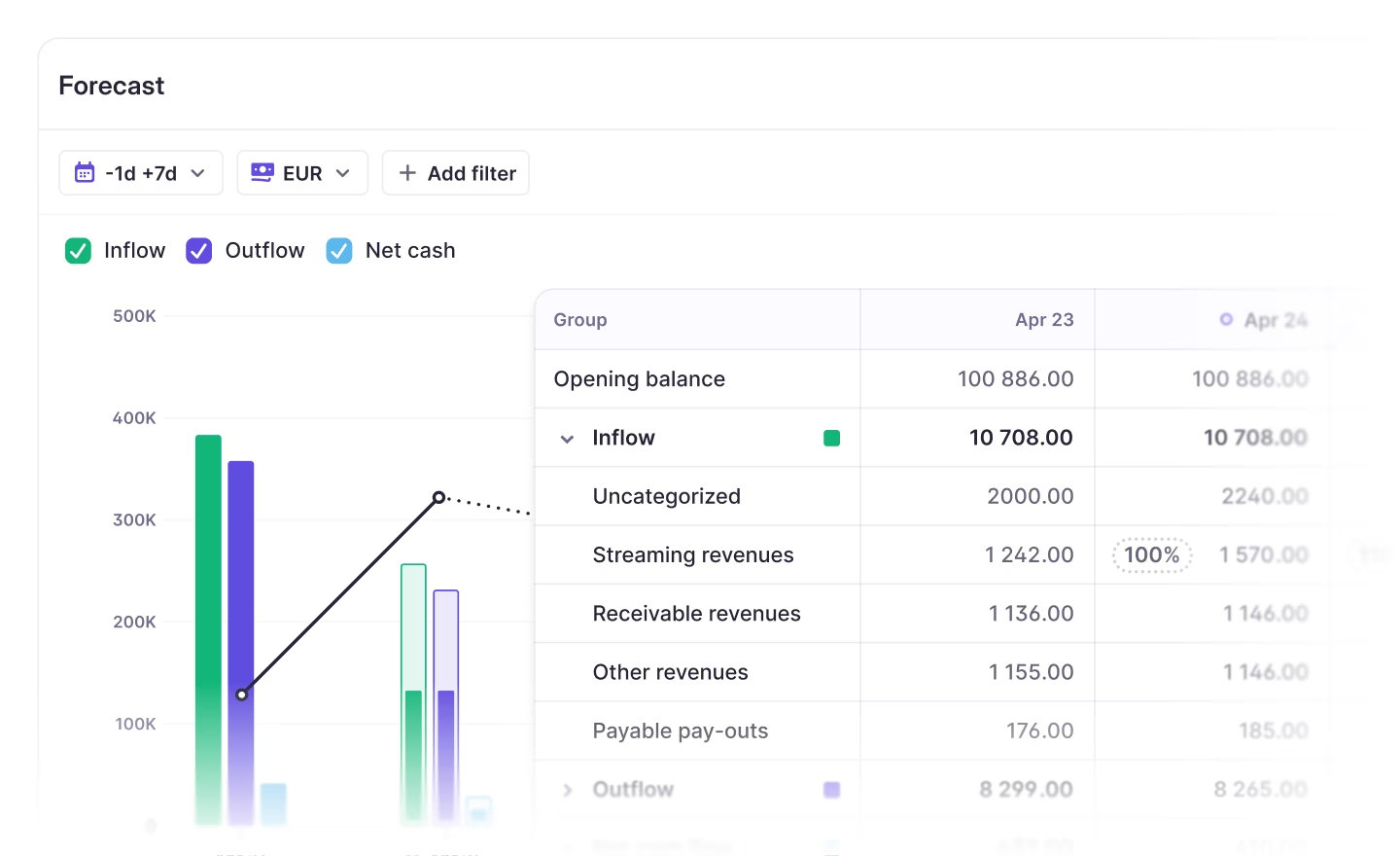What is scenario planning?
In a forecasting context, scenario planning involves creating different projections to simulate potential cash flow outcomes (e.g., best-case, worst-case, and baseline cases).

Scenario planning refers to creating different projections to simulate potential cash flow outcomes based on various assumptions. For a 13-week cash flow forecast, scenarios might include best-case, worst-case, and baseline cases, each reflecting a set of different assumptions about key forecast inputs.
Specifically, scenario planning involves creating multiple "what-if" scenarios based on varying assumptions about key drivers, such as revenues, expenses, market conditions, or external events, to assess how these factors might affect cash inflows, outflows, and overall liquidity.
Example scenarios
Base case or baseline scenario:
- The most likely outcome, based on current plans and expectations.
- Reflects normal business operations without significant disruptions.
- E.g., steady revenue growth of 5%, stable supplier costs, and consistent customer payment terms.
Optimistic scenario:
- Projects favorable conditions, such as increased sales, reduced costs, or improved market conditions.
- Useful for understanding potential growth opportunities.
- E.g., revenue growth of 10% due to a successful marketing campaign; faster customer payments.
Pessimistic scenario:
- Models adverse conditions, such as a drop in revenue, higher costs, or economic downturns.
- Helps identify potential cash shortfalls and risk mitigation strategies.
- E.g., revenue decline of 15% due to economic slowdown; delayed payments from key customers.
Extreme or worst-case scenario:
- Explores the impact of extreme but plausible events, such as a market crash, regulatory change, or supply chain disruption.
- Tests the organization's resilience under high-pressure conditions.
- E.g., a major supplier increases prices by 20%, and a key market faces regulatory changes.
How scenario planning process works
Identify key drivers
Start by determining the main factors influencing cash flow, such as critical revenue streams, payment terms, interest rates, and external economic conditions.
Define scenarios
Develop plausible scenarios by varying assumptions about these key drivers. For example: a 10% decrease in sales, a 15% increase in supplier costs, and delayed payments from major customers.
Model cash flow impacts
Adjust the cash flow forecast to reflect the conditions in each scenario. Use financial modeling tools or spreadsheets to project cash inflows, outflows, and balances under each scenario.
Analyze results
Compare the outcomes of different scenarios to identify vulnerabilities, cash shortfalls, or periods of high liquidity.
Develop action plans
Create contingency plans for adverse scenarios (e.g., securing a line of credit, delaying investments) and identify opportunities to capitalize on favorable conditions.
Monitor and update
Regularly review and revise scenarios as new data or changes in the business environment occur. Perform variance analysis to compare actual cash flow results with different scenarios—this analysis helps businesses assess the accuracy of their forecast scenarios and improve future projections.
How Atlar can help with scenario planning
With Atlar, you can easily model different cash flow scenarios—optimistic, pessimistic, or baseline—directly within the platform. Built-in variance analysis tools also let you compare forecasted and actual cash flows, helping to refine your forecasts and improve accuracy over time.
Atlar's user-friendly forecasting tools are designed to let create and update a rolling 13-week forecast in a matter of minutes—so you can focus your time on analysis and decision-making. If this sounds interesting, book a 30-minute demo with our team to see Atlar’s forecasting capabilities at work.

You can unsubscribe anytime.
Further reading
See Atlar in action.
Enter your work email to watch a live product demo.


